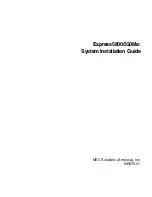
FC310x as master
FC3101 and FC3102
10
Version: 3.0
3
FC310x as master
3.1
Master
As master, the PROFIBUS DP, PROFIBUS DPV1, PROFIBUS DPV2, S5-FDL-AGAG communication and
the PROFIDRIVE-PKW Interface protocols are supported.
PROFIBUS DP
A summary of the PROFIBUS-DP master functions follows:
Function
Description
Standard DP
chapter describes the necessary steps for establishing
a DP connection (Set_Prm - parameter, Chk_Cfg - configuration) and for the
exchange of user data (Data_Exchange).
Task synchronization
chapter describes how the TwinCAT task is
synchronized with the PROFIBUS cycle.
Slave priorities
The slaves can receive telegrams with differing cycle times. The necessary
settings are described in the
Slave Prioritization/Multiple DP Cycles [
chapter.
Multiple DP cycles
In order to receive the most recent possible inputs when the task cycles are long,
a number of DP cycles can be carried out for each task cycle, as described in the
chapter on
Slave Prioritization/Multiple DP Cycles [
.
Diagnostics
facilities are described in this chapter.
Error Reactions
to be set in the event of a fault (a
slave fails or the task is stopped).
Sync/Freeze
Activation of the sync and freeze commands is described in the
Upload Configuration
The slaves connected to the PROFIBUS can be read via
Master redundancy
chapter describes the settings required to have a
second master with the same configuration configured as a standby master (as
from TwinCAT 2.9).
PROFIBUS DPV1
A summary of the PROFIBUS-DPV1 master functions follows:
Function
Description
MSAC_C1
connection is established along with the cyclic connection.
The Read, Write and Data_Transport services are supported.
MSAC_C2
connection is established independently of the cyclic
connection, and can also be used by a second master (while the first one is
communicating with the slave over the cyclic MSAC_C1 connection). The Initiate,
Abort, Read, Write and Data_Transport services are supported.
PROFIBUS DPV2
A summary of the PROFIBUS-DPV2 master functions follows:
Function
Description
Equidistance
The DPV2 equidistance functionality is described in the
chapter.











































